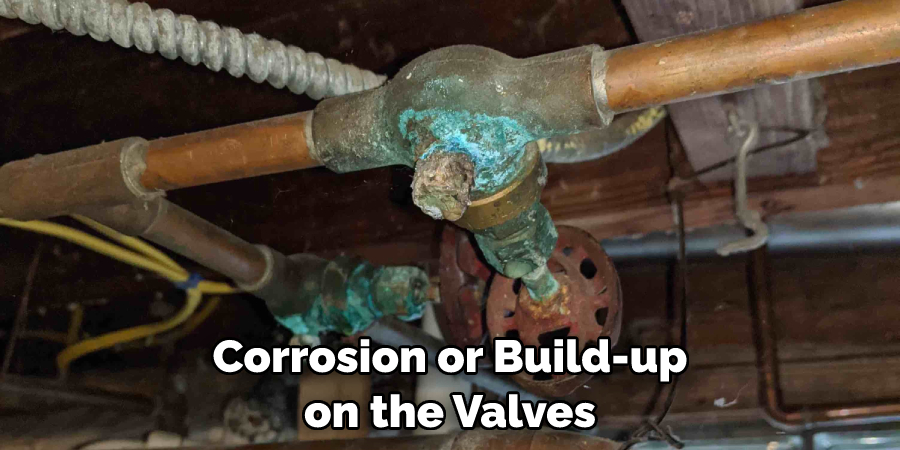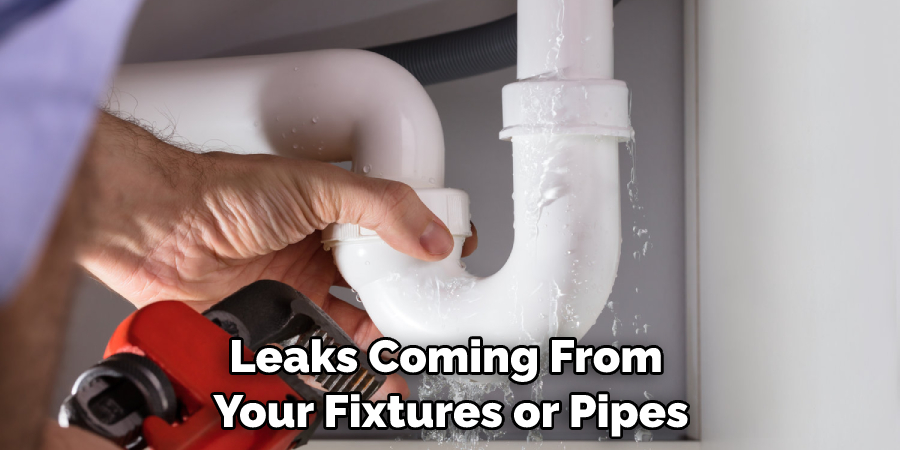From the moment you turn on the shower to when you adjust it just right, water pressure is one of the most important aspects. Whether it’s from your sink or a garden hose, high-pressure water washes away dirt and debris quickly and efficiently – helping us clean up faster than ever before.

But what if your water pressure suddenly decreases? Not being able to achieve that same level of performance can be a major problem in any home.
Luckily there are ways to fix fluctuating water pressures so that you never again need to worry about not having enough power flowing through your pipes!
In this blog post, we will discuss how to fix fluctuating water pressure – providing both peace of mind and plenty of efficient water use every time you turn on a faucet or hose pipe!
What Are the Causes of Fluctuating Water Pressure?
There are a few potential causes of fluctuating water pressure, but the most common cause is when your home’s main shutoff valve becomes clogged. This can restrict the flow of water to your entire house, which then means that you won’t be able to get enough pressure in any of your faucets or showers.

Other possible causes might include low water pressure from the municipal supplier, mineral build-up inside pipes, corroded valves and connections, and worn out washers in fixtures.
Now that you know some of the possible causes of low water pressure, let’s discuss how to fix it!
What Will You Need?
Before you get started, it’s important to have the right tools and materials on hand. Here is a list of items that you should have before attempting to fix your water pressure:
- Adjustable wrench
- Plumbers tape
- Replacement washers or O rings
- Pipe cleaner or vinegar/water mix (for corroded valves)
Once you have everything ready, follow these steps to fix your fluctuating water pressure.
10 Easy Steps on How to Fix Fluctuating Water Pressure
Step 1. Locate the Main Shutoff Valve:
This is typically located either inside or outside of your home. You can usually find it near the water meter or where the main water line enters your home. As this valve regulates the entire water supply, it is important to make sure that you get access to it.
Step 2. Turn Off the Water Supply:
Once you have located the shutoff valve, it is time to turn off the water supply. This will prevent any accidents from happening while fixing your water pressure. If the valve is difficult to turn, you can use the adjustable wrench to help.
Step 3. Remove Any Corrosion:
If you notice any corrosion or build-up on the valves and connections, then use a pipe cleaner or vinegar/water mix to remove them. Make sure that all of the excess material has been removed before proceeding further. Because corrosion can cause the valves to become stuck, it is important to make sure that all of the material has been removed.

Step 4. Replace Worn Out Washers or O Rings:
Some washers or O rings may wear out in your plumbing fixtures, which can also cause low water pressure. If so, replace them with new ones. Otherwise, you may need to replace the entire fixture.
Step 5. Reattach Any Connections:
If you had to remove any connections to replace washers or O rings, then make sure that they are reattached properly before continuing the process. Be careful not to overtighten them as this can cause damage. Instead, use plumber’s tape to ensure a good seal.
Step 6. Turn On the Water Supply:
Once everything has been checked and put back together, it is time to turn on the water supply. Ensure that the valves are opened all the way so that maximum pressure can be achieved. Look out for any leaks or drips from the fixtures as well.
Step 7. Check for Leaks:
Check for any leaks coming from your fixtures or pipes after turning on the water supply. If there are any, you may need to tighten up the connection points or replace some of the parts that have gone bad. Ensure that all of the connections are properly formed and that there is no water leakage before you move on to the next step.

Step 8. Test Out the Water Pressure:
Now it is time to test out the water pressure in your house. Turn on all the faucets and showers, and ensure they are getting enough power. If not, you can adjust the valves to increase or decrease the water flow coming into your home.
Step 9. Check for Corroded Valves:
If you notice any corrosion on the valves, then it is important to replace them as soon as possible. This will ensure that your fixtures can get proper water pressure and prevent any further damage. Additionally, make sure to check the pressure gauge to ensure that it is working properly.
Step 10. Regularly Monitor Your Plumbing System:
It is always a good idea to regularly monitor your plumbing system and check for any issues that may arise. This will help ensure that your fixtures are able to get the adequate water pressure they need. Remember, if you ever run into any problems, make sure to contact a professional plumber for assistance.
By following these steps, you can easily fix fluctuating water pressure in your home. If you have any further questions or concerns, then it is always best to call a professional plumber who can help diagnose and repair any underlying problems. With the right care and maintenance, you should be able to ensure that your water pressure remains in optimal condition.
5 Additional Tips and Tricks
1. Check for any blockages in the plumbing or pipes. This could be caused by debris, mineral buildup, or other obstructions that can cause water pressure to drop.
2. Test your main valve and make sure it is fully opened. If not, open it up as far as possible for optimal water pressure flow.
3. Replace or repair old water fixtures and hoses due to age-related issues that can lead to low pressure from these sources.
4. Clear out sediment build-up from your hot water heater—this can reduce the amount of hot water coming through your pipes when you turn on a tap, resulting in lower pressure overall.
5. Adjust the winterizing settings if necessary; this could be done by adding more water to the tank or raising the pressure setting on your regulator. Doing this can help ensure that you get the best possible water pressure in all seasons.

By following these five tips and tricks, you will be able to quickly and easily fix fluctuating water pressure problems in your home. It is important to remember to maintain your plumbing system regularly so that such issues are avoided in the future. Regular maintenance of your pipes and fixtures can save you time and money in the long run!
5 Things You Should Avoid
1. Never force-open the main valve—this can damage it and lead to water pressure issues.
2. Don’t replace or repair any plumbing or fixtures without first turning off the water supply. This will help prevent flooding and other damages that could occur if you don’t take the proper precautionary steps.
3. Avoid using chemical drain cleaners to remove blockages in your pipes; this can cause corrosion and worsen the problem over time.
4. Don’t use too many winterizing settings on your regulator, as this might put too much pressure on the system, leading to leaks or even burst pipes in extreme cases.
5. Never ignore a fluctuating water pressure problem; it can lead to further damage and expensive repairs if not addressed promptly.
By following these five tips and avoiding the mistakes listed, you will be able to quickly fix and prevent any water pressure issues in your home for good. Remember to maintain your plumbing system regularly for optimal results!
What Type of Control is Used to Regulate the Pressure of Water?
The most common type of control used to regulate the pressure of water is a pressure-reducing valve. This device works by reducing the incoming water pressure from the main supply line and then adjusting it to the desired level before releasing it into the system.
Depending on the model, the valve can be adjusted manually or automatically to ensure that you are always getting optimal water pressure for your needs.
Other types of controls include pressure switches, which measure the difference in water pressure between two points in a system and then turn on or off when appropriate; check valves, which allow a certain flow rate but prevent backflow; and pumps, which increase or decrease pressure as needed.
No matter which type of control you choose, they all work together to ensure that your system provides the proper water pressure for your needs. With properly functioning control, you can guarantee that you are always getting the most out of your water supply!
Conclusion
Finishing the work of repairing the fluctuating water pressure is a great way to save money on utility bills and improve the value and safety of your home.
Thanks to this guide on how to fix fluctuating water pressure, you have all the information you need to locate and fix a possible issue with your water system. If these steps do not lead to success, then it is important to call a qualified professional for further assistance.
Taking small preventative steps and being vigilant in spotting signs of impending trouble are key strategies for keeping your plumbing systems running smoothly year-round.
Even if you never experienced any issues with your plumbing system, homeowners should always have their plumbing systems inspected yearly by a certified plumber. After all, investing in maintenance will cost far less than waiting for major problems before seeking help.

